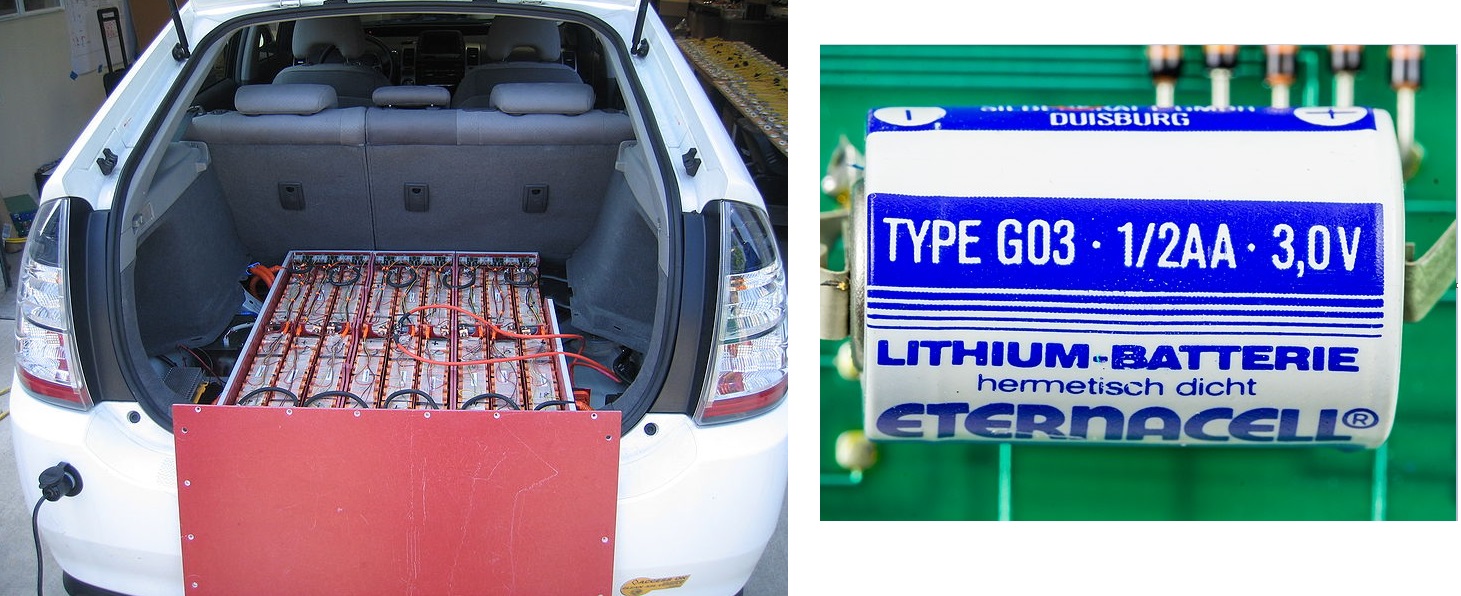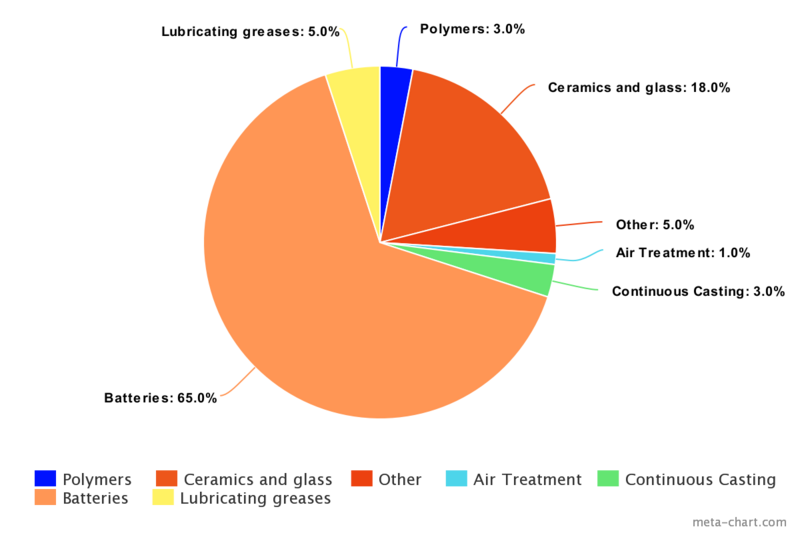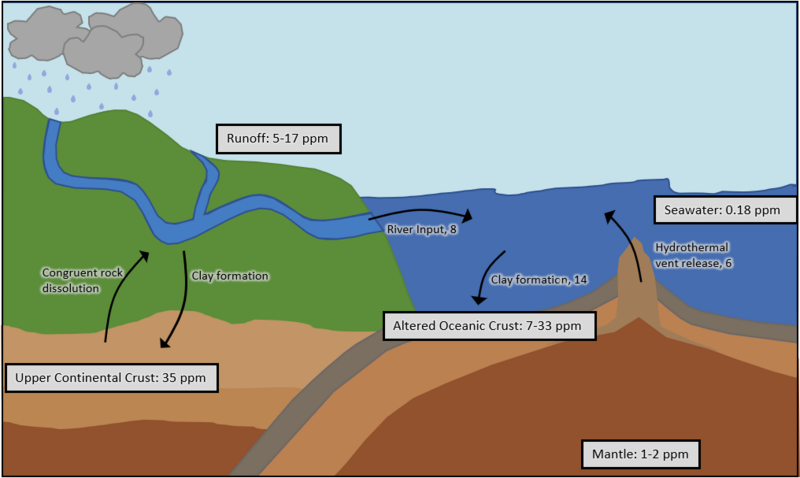
The Role of Lithium in Electric Car Batteries
Lithium is a key component for the future of the electric vehicle (EV) revolution. As the world transitions toward more sustainable transportation, lithium's role has become pivotal, especially in powering the batteries that are at the heart of electric cars. Understanding the dynamics of lithium supply and demand is essential to assess the long-term viability of electric vehicles, the environmental and geopolitical implications of lithium mining, and the potential innovations in battery technology that could shape the industry.
This article explores the current state of the lithium market, examining the key factors that influence both its supply and demand, the challenges faced by the industry, and the future prospects for lithium and electric vehicles.
The Demand for Lithium
1. The Global Shift Toward Electric Vehicles
The demand for lithium has skyrocketed in recent years, primarily due to the accelerating adoption of electric vehicles. According to industry reports, lithium demand for EVs alone has grown by more than 50% annually over the past decade. Governments worldwide have set ambitious targets to reduce carbon emissions and transition away from fossil-fuel-dependent vehicles. For instance, the European Union has proposed a ban on the sale of internal combustion engine (ICE) vehicles by 2035, while countries like China and the United States are also working toward increasing the adoption of EVs.
This push for cleaner transportation is directly tied to lithium, as the batteries used in electric vehicles require large amounts of the metal. For example, a single electric car can require up to 10 kilograms (22 pounds) of lithium for its battery, depending on the vehicle's size and range. As more automakers ramp up production of electric cars, the demand for lithium is expected to continue rising.
2. Energy Storage and Renewable Integration
Aside from electric vehicles, lithium-ion batteries are also crucial for large-scale energy storage systems. As the world turns to renewable energy sources like solar and wind, energy storage has become essential to address the intermittency of these sources. Lithium-ion batteries are among the most effective solutions for storing electricity generated during periods of high renewable output to be used when generation is low. These storage systems are being deployed in homes, commercial properties, and utility-scale installations to stabilize energy grids.
The growing integration of renewable energy into global grids is driving the demand for lithium even further. Countries that are heavily investing in renewable energy infrastructure are also becoming large consumers of lithium.
3. Technological Advancements and Innovation
The technological advancements in battery efficiency, capacity, and range are also driving demand for lithium. As electric vehicle batteries become more powerful and capable of longer ranges, they require more lithium. The drive to improve battery technology also leads to a greater demand for high-purity lithium, which can be used to produce batteries with more stable performance and longer lifespans.
Moreover, advancements in solid-state battery technology, which are seen as the next frontier in EV batteries, could further increase the demand for lithium. Although still in the early stages of commercialization, solid-state batteries promise higher energy density, faster charging times, and improved safety compared to conventional lithium-ion batteries. As these technologies mature, the demand for lithium could rise exponentially.
4. Lithium's Role in Other Industries
While electric vehicles and energy storage are the primary drivers of lithium demand, the metal is also used in other industries. Lithium is utilized in the production of lubricating greases, heat-resistant glass and ceramics, lithium batteries for mobile phones, laptops, and other consumer electronics, and even in pharmaceutical applications for treating bipolar disorder. As global demand for these products continues to grow, the need for lithium will likely increase across multiple sectors.
The Supply of Lithium
1. Geographic Distribution of Lithium Reserves
Lithium is not evenly distributed across the globe. The majority of the world's known lithium reserves are concentrated in a few regions, particularly the "Lithium Triangle" in South America, which includes parts of Argentina, Chile, and Bolivia. Together, these countries are home to more than 50% of the world's known lithium reserves. Other significant sources of lithium include Australia, which is a major producer of lithium from hard rock mining, and China, which has both domestic reserves and is a global leader in lithium processing.

2. Lithium Extraction Methods
Lithium can be extracted from three primary sources: brine deposits, hard rock (spodumene), and clay. Each method has its own challenges and environmental considerations.
Brine Extraction: This method involves pumping lithium-rich brine from underground salt flats to the surface, where it is left to evaporate in large ponds, leaving behind lithium concentrates. This method is more cost-effective and less energy-intensive but requires large quantities of water and a long evaporation time. It is also geographically limited to areas with the right geological conditions, such as the Lithium Triangle in South America.
Hard Rock Mining: Hard rock mining, particularly from spodumene, involves extracting lithium from solid rock. While this method can be more expensive and energy-intensive than brine extraction, it has the advantage of being able to be done in a wider range of geographical locations. Australia is the world's largest producer of lithium from hard rock mining.
Clay Extraction: The extraction of lithium from clay deposits is a newer method and is still in the experimental and development stages. Although it has the potential to unlock new lithium supplies, the extraction process is more complex and less efficient than brine or hard rock mining.
The extraction of lithium, especially from brines, has been criticized for its environmental impact, including the use of large amounts of water in water-scarce regions and the disruption of local ecosystems. This has led to growing concerns over the sustainability of lithium production, especially as demand increases.
3. Geopolitical Factors and Supply Chain Vulnerabilities
The concentration of lithium reserves in a few regions poses potential risks to the stability of global supply chains. Any disruptions in the political or economic stability of these regions could have significant impacts on lithium supply. For example, Bolivia, despite having some of the world's largest lithium reserves, has faced political instability and has struggled to attract foreign investment in its lithium industry.
China is another important player in the lithium supply chain. While the country has substantial lithium reserves, it is also the world's largest processor of lithium. It controls much of the global refining capacity, giving it significant leverage in the global lithium market. Additionally, China has invested heavily in lithium mining operations in other countries, particularly in Africa and South America.
In recent years, geopolitical tensions and trade disputes have raised concerns about the security of lithium supplies. As demand for lithium continues to grow, countries and companies are increasingly looking to diversify their supply chains to avoid over-reliance on any one region or supplier.
4. Exploration and Development of New Lithium Sources
In response to the growing demand for lithium, exploration and development of new lithium deposits are underway across the globe. Companies are increasingly investing in exploration projects in regions outside of the Lithium Triangle and Australia, including parts of North America, Africa, and Europe. New technologies, such as direct lithium extraction (DLE), are also being explored to increase the efficiency and reduce the environmental impact of lithium extraction.
However, it is important to note that the development of new lithium mines can take years, if not decades, due to regulatory approvals, environmental assessments, and the construction of infrastructure. This lag in supply growth could lead to supply shortages, particularly in the short term.
Challenges in the Lithium Market
1. Price Volatility
Lithium prices have been highly volatile in recent years, driven by fluctuations in both supply and demand. Prices surged in the early 2020s as the demand for EVs and energy storage systems grew, but they have also experienced periods of sharp declines, reflecting concerns about over-supply or a slowing demand for electric vehicles. This volatility can create uncertainty for companies that are heavily invested in lithium mining or production.
2. Environmental Concerns
The environmental impact of lithium extraction, particularly from brine deposits, is a significant concern. The extraction process requires large amounts of water, which can be problematic in arid regions like the Lithium Triangle. There is also concern about the potential contamination of local water supplies and ecosystems. While hard rock mining is less water-intensive, it can have other environmental impacts, such as habitat destruction and carbon emissions.
As demand for lithium grows, there will be increasing pressure on the industry to adopt more sustainable and environmentally responsible practices. New extraction methods, such as direct lithium extraction (DLE), are being researched to address these concerns, but it will take time before they become widespread.
3. Supply Chain Bottlenecks
The lithium supply chain is complex and includes mining, processing, and transportation, all of which are subject to disruptions. Bottlenecks in any part of the supply chain can lead to delays and higher costs. Additionally, the transportation of lithium, particularly across long distances, is often subject to geopolitical risks, trade barriers, and fluctuations in global shipping costs.
The Future of Lithium Supply and Demand
1. Increased Recycling and Secondary Supply
As the demand for lithium increases, so does the pressure to improve the recycling of lithium-ion batteries. Recycling could provide a significant source of secondary lithium supply, reducing the reliance on primary mining. Currently, only a small fraction of lithium-ion batteries are recycled, but efforts to scale up battery recycling are gaining momentum. Innovations in recycling technologies, combined with the growing number of EVs reaching the end of their life cycle, could help meet future lithium demand in a more sustainable manner.
2. Alternative Technologies
Lithium-ion batteries are currently the dominant technology in electric vehicles, but other battery technologies are being explored as potential alternatives. Solid-state batteries, which use a solid electrolyte instead of a liquid, could eventually reduce the dependence on lithium. Sodium-ion batteries, which use sodium instead of lithium, are another promising alternative, although they are still in the early stages of development.
If these alternative technologies achieve commercial viability, they could significantly reduce the demand for lithium. However, this is still some way off, and lithium-ion batteries are likely to remain the dominant technology for the foreseeable future.
Conclusion: The supply and demand of lithium for electric car batteries is at the heart of the EV revolution. As demand for electric vehicles and renewable energy storage continues to grow, the need for lithium will remain high. However, the supply of lithium is not without its challenges, including environmental concerns, geopolitical risks, and supply chain bottlenecks.
To meet future demand, the industry will need to invest in new extraction technologies, increase recycling rates, and develop alternative sources of supply. At the same time, advancements in battery technology could change the dynamics of the market, either by reducing the reliance on lithium or improving the efficiency of lithium use in batteries.
As the world shifts toward more sustainable energy solutions, lithium will undoubtedly play a key role in shaping the future of transportation and energy storage, making it an essential resource for the decades to come.

You can learn these concepts and more at Dr Hock's maths and physics tuition.